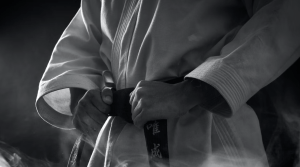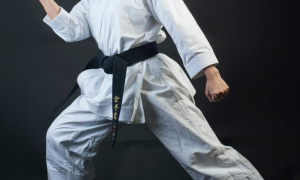
With its dynamic high kicks, lightning-fast spins, and global popularity, Taekwondo has emerged as one of the most practiced martial arts worldwide. Boasting an estimated 70 million practitioners, it holds a prominent position alongside other traditional martial arts like karate and Jiu-Jitsu. However, the question of “is Taekwondo effective” in real-world self-defense and street fighting situations has long been a subject of debate among martial arts enthusiasts and critics alike.
In this comprehensive article, we delve into the question: Is Taekwondo truly effective for self-defense and street fighting? We will explore the foundations of Taekwondo, its role in competitive and sportive contexts, and its potential applications in real fighting scenarios. Moreover, we will address the strengths and limitations of Taekwondo’s high kicks, the importance of cross-training, and the safety considerations for practitioners.
Whether you are an experienced martial artist seeking to enhance your skills or a curious individual considering Taekwondo as a means of self-defense, this article aims to provide an insightful analysis of the art’s practicality and adaptability in the face of real-world challenges.
Table of Contents
Toggle![]()
Understanding the Foundations of Taekwondo
![]()
Taekwondo, which translates to “the way of the foot and fist,” originated in Korea and has a rich history dating back over 2,000 years. Rooted in traditional Korean martial arts, Taekwondo gained global recognition in the 20th century and was officially recognized as an Olympic sport in 2000. It is known for its emphasis on high-flying kicks, lightning-fast strikes, and impressive forms known as poomsae.
Taekwondo’s Distinctive Techniques
At the core of Taekwondo are its signature techniques, including a wide array of kicks such as front kicks, roundhouse kicks, side kicks, hook kicks, and spinning kicks. These kicks are executed with speed, precision, and flexibility, making them visually stunning and highly effective in controlled environments.
Taekwondo in Sportive Contexts
One of the factors that have contributed to Taekwondo’s widespread popularity is its success in competitive sports, particularly in Olympic-style sparring. Taekwondo practitioners compete in sparring matches where they score points for landing kicks on specific target areas of their opponents’ bodies.
The sportive aspect of Taekwondo has given rise to highly skilled athletes who have mastered the art of scoring points with their kicks while maintaining excellent footwork and defensive maneuvers. These practitioners have achieved great success in the competitive arena, earning medals and showing Taekwondo as an effective martial art in a sport setting.

Limitations of Sportive Taekwondo
While Taekwondo’s sportive aspect is captivating and showcases the art’s athleticism and technical prowess, it also introduces certain limitations. In competitive sparring, practitioners often abide by strict rules and regulations that prioritize scoring points over delivering full-contact strikes. This has led to the development of a “point-fighting” approach, where light, fast kicks are prioritized for scoring rather than powerful strikes which we come to expect from things like the UFC.
![]()
Is Taekwondo Effective for Self-Defense and Street Fighting?
![]()
While Taekwondo boasts impressive kicking techniques and distance management, it does have shortcomings as a standalone art in self-defense and street fighting. One major limitation is its lack of groundwork training, leaving practitioners ill-prepared for grappling situations or ground defense.
Additionally, Taekwondo’s emphasis on light, fast kicks for point sparring may not be as effective in real-world encounters where full-contact strikes are required. Its reliance on flashy kicks can also leave practitioners vulnerable to counterattacks, potentially compromising their balance and defensive capabilities.
Real-World Application of Taekwondo Techniques
Taekwondo’s effectiveness in self-defense and street fighting scenarios is a contentious topic. Taekwondo Practitioners argue that the art’s powerful kicks and ability to maintain distance can be advantageous in defending against potential attackers. Moreover, some proponents claim that Taekwondo’s emphasis on agility and footwork can help practitioners evade and escape dangerous situations.
Success Stories in Real Combat
While the limitations of sportive Taekwondo are evident, there have been instances where practitioners of the art have demonstrated its effectiveness in real-world combat situations. Notable success stories provide valuable insights into how Taekwondo techniques can be effective when adapted and combined with other martial arts.
Michael “Venom” Page: Blending Taekwondo with MMA
Michael “Venom” Page, a British mixed martial artist, gained prominence for his unorthodox striking style, heavily influenced by his Taekwondo background. Page is known for his flashy kicks, spinning attacks, and quick footwork, which he successfully translates into the MMA cage.
Page’s success demonstrates that, with the right adaptability and strategic approach, Taekwondo techniques can be integrated effectively into a broader mixed martial arts skill set. By combining Taekwondo’s unique kicking abilities with other disciplines such as boxing and Brazilian Jiu-Jitsu, Page has achieved victories against top-level opponents.
Anthony “Showtime” Pettis: The Showman of MMA
Another Taekwondo practitioner who has left a significant impact on MMA is Anthony “Showtime” Pettis. Known for his “Showtime Kick” off the cage, Pettis showcased Taekwondo’s acrobatic elements in the highest levels of competition.
Pettis’s success exemplifies the ability of Taekwondo techniques to surprise and confuse opponents, thereby creating opportunities for effective strikes and submissions. Like Page, Pettis has embraced cross-training to become a well-rounded martial artist, combining his Taekwondo foundation with techniques from various disciplines.
The Role of Cross-Training and Realistic Drills
To truly assess Taekwondo’s effectiveness in self-defense, it is crucial to recognize the importance of cross-training. Integrating other martial arts, such as Brazilian Jiu-Jitsu for ground defense and Muay Thai for close-range strikes, can provide a more well-rounded skill set for real-world confrontations.
Additionally, incorporating realistic self-defense drills that simulate street fighting scenarios can bridge the gap between sportive Taekwondo and practical application. These drills challenge practitioners to react under pressure, account for multiple attackers, and incorporate defensive techniques beyond kicks.
The Importance of Mental Preparedness
In any self-defense situation, mental preparedness and situational awareness play a critical role in one’s ability to respond effectively. A calm and focused mind allows practitioners to assess threats, make split-second decisions, and execute techniques with precision.
![]()
Evaluating Taekwondo’s Kicking Effectiveness in Real Fights
Taekwondo’s dynamic and acrobatic kicks have garnered admiration and awe in the martial arts community. However, their practicality in real fights must be analyzed objectively. While a well-executed Taekwondo kick can undoubtedly deliver significant impact, it also exposes practitioners to potential counterattacks and balance disruptions.
![]()
The Need for Adaptability and Versatility
Effective self-defense and street fighting require adaptability and versatility in one’s techniques. In real-world encounters, practitioners may face adversaries with different fighting styles, sizes, and skill levels. Being well-rounded and able to adjust techniques to fit various scenarios becomes crucial for success.
The Power and Versatility of Taekwondo Kicks in Point-Sparring
In point-sparring competitions, Taekwondo kicks demonstrate their effectiveness in scoring points and outmaneuvering opponents. The speed and precision of kicks, such as roundhouse kicks, side kicks, and spinning hook kicks, allow practitioners to strike from various angles with lightning speed. These kicks, when executed correctly, can be challenging for opponents to defend against.
The Practicality of High Kicks and Spinning Attacks in Self-Defense
While Taekwondo kicks are visually impressive in point-sparring, their practicality in real-world self-defense scenarios is a subject of scrutiny. High kicks and spinning attacks, while effective in point-sparring, may not always be suitable for self-defense.
In street fights or self-defense situations, the environment can be unpredictable, and the rules of point-sparring no longer apply. Attempting high kicks or spinning attacks against multiple attackers or in confined spaces can leave a practitioner vulnerable to takedowns or counterattacks. Moreover, in self-defense, the primary goal is to neutralize the threat quickly and safely, which may require more direct techniques.
Adapting Taekwondo Kicks for Effectiveness in Street Fights
To make Taekwondo kicks more effective in street fights, practitioners must adapt their techniques accordingly. This involves understanding the appropriate range and timing for each kick and incorporating practical variations of these kicks that are suitable for real-world self-defense.
For example, rather than executing a high spinning hook kick to the head, a Taekwondo practitioner might opt for a mid-level side kick to the attacker’s knee or abdomen. This modification allows for better balance and reduces the risk of leaving oneself exposed to potential counterattacks.
Furthermore, Taekwondo practitioners should complement their kicks with effective hand strikes and footwork to create a well-rounded self-defense arsenal. By combining Taekwondo kicks with techniques from other martial arts, practitioners can enhance their ability to defend themselves effectively in diverse situations.
Enhancing Striking Power Through Strength Training
To enhance the power of Taekwondo kicks, practitioners must supplement their training with strength and conditioning exercises. Building strong legs and core muscles can significantly improve the force behind each strike, making kicks more impactful and effective in self-defense situations.
Furthermore, mental preparedness and situational awareness remain crucial elements in any self-defense scenario. Practitioners should train to stay calm under pressure, make swift decisions, and apply techniques with precision when facing real-world threats.
![]()
Building Strength and Skills in Taekwondo
One of the key aspects that draw people to Taekwondo is its ability to improve both physical and mental attributes. Many enthusiasts wonder, “Can Taekwondo make you strong?” The answer lies in the rigorous training and discipline that Taekwondo offers.
![]()
Can Taekwondo Make You Strong?
Taekwondo training involves a combination of cardiovascular exercises, bodyweight conditioning, and repetitive kicking and striking techniques. As practitioners progress through their training, they develop greater muscular endurance, core strength, and overall physical fitness. While Taekwondo may not focus solely on building bulk and sheer strength like weightlifting, it undoubtedly contributes to developing functional strength and agility.
Improving Flexibility, Coordination, and Overall Fitness
Flexibility is a hallmark of Taekwondo, as practitioners consistently perform high kicks and dynamic movements. Regular stretching routines in Taekwondo enhance flexibility, promoting a broader range of motion and reducing the risk of injuries. Improved flexibility is not only beneficial for kicking techniques but also translates to better overall body movement and fluidity.
In addition to flexibility, Taekwondo training hones coordination and balance. The precise execution of kicks, punches, and footwork demands heightened body awareness and coordination. As Taekwondo practitioners master these movements, their sense of balance and proprioception improves, allowing for more effective execution of techniques.
Taekwondo training also provides an excellent cardiovascular workout, contributing to enhanced overall fitness levels. The combination of aerobic exercises with strength and conditioning drills promotes endurance, stamina, and cardiovascular health.
Incorporating Strength Training for Optimal Effectiveness in Combat
While Taekwondo itself develops functional strength, incorporating additional strength training exercises can further enhance combat effectiveness. Resistance training, such as weightlifting and bodyweight exercises, helps build muscle mass and improves the body’s ability to generate power.
By supplementing Taekwondo training with strength exercises, practitioners can increase their striking force, making their kicks and punches more formidable. Moreover, a strong core and upper body add stability to techniques and aid in executing precise movements during combat.
It is important to note that balanced strength training should complement Taekwondo training without compromising flexibility or speed. Many Taekwondo schools incorporate strength and conditioning exercises into their curriculum, tailored to improve performance in the martial art.
![]()
The Learning Curve of Taekwondo
![]()
How Hard Is It to Learn Taekwondo?
Learning Taekwondo, like any martial art, requires dedication and consistent practice. The difficulty of learning Taekwondo can vary from person to person, depending on factors such as age, physical fitness, prior experience in other martial arts, and the individual’s learning style.
For beginners, grasping the basic techniques of Taekwondo, such as stances, kicks, and strikes, may initially feel challenging. However, with the guidance of experienced instructors and a willingness to learn, students can steadily progress and gain confidence in their abilities.
Challenges and Time Required to Master Taekwondo Techniques
Becoming proficient in Taekwondo’s techniques takes time and patience. It is essential to understand that mastery in martial arts is a journey rather than an instant accomplishment. Students should expect to encounter challenges along the way, such as perfecting complex spinning kicks or mastering intricate poomsae (forms).
The time required to achieve mastery varies significantly based on individual commitment and practice frequency. While some students may attain a certain level of proficiency in a few years, achieving true mastery may take a lifetime of dedicated training and refinement. Achieving a Taekwondo Black Belt requires on average 5 years, check out our guide on the Taekwondo Belt Progression System
Dedication and Perseverance in Taekwondo
Excelling in Taekwondo demands unwavering dedication and perseverance. As students progress through the ranks, they must exhibit discipline and a willingness to push past their comfort zones. Consistent training, attending classes regularly, and continuously seeking self-improvement are essential traits for success.
Instructors often emphasize the importance of mental fortitude and perseverance to overcome setbacks and challenges in the martial arts journey. By embracing the tenets of Taekwondo, such as perseverance and indomitable spirit, students can build not only their physical skills but also their mental resilience.
![]()
Potential Risks in Taekwondo
![]()
Is There Any Danger in Taekwondo?
Like any physical activity, Taekwondo carries inherent risks, especially when high-impact techniques are involved. The potential danger lies in the powerful kicks and strikes used in sparring and competition, which can lead to injuries if not executed with proper control and technique.
Potential Injuries and Risks Associated with High-Impact Techniques
Some common injuries associated with Taekwondo include strains, sprains, bruises, and contusions. The repetitive nature of training, particularly in kicking, can lead to overuse injuries if practitioners do not allow sufficient time for rest and recovery.
Additionally, high-impact techniques can pose a risk of concussions and joint injuries, especially if students do not wear appropriate protective gear during sparring sessions.
Importance of Proper Training, Supervision, and Safety Measures
To minimize the risk of injuries in Taekwondo, proper training, supervision, and safety measures are paramount. Qualified instructors should provide comprehensive guidance and ensure that students learn and execute techniques safely and responsibly.
Wearing appropriate protective gear, such as headgear, mouth-guards, and shin guards, during sparring and competition is essential to reduce the risk of serious injuries.
![]()
Taekwondo Pros and Cons: Summary
![]()
Pros of Taekwondo:
- Dynamic Kicking Techniques: Taekwondo is renowned for its powerful and visually impressive kicking techniques, showcasing speed, precision, and flexibility.
- Distance Management: The art’s emphasis on maintaining distance can be advantageous in creating space, assessing threats, and executing counterattacks.
- Agility and Footwork: Taekwondo training enhances practitioners’ agility and footwork, enabling quick reactions and evasion in combat situations.
- Competitive Success: Taekwondo’s success in competitive sparring and point-based tournaments has produced skilled athletes and champions.
- Overall Fitness: Taekwondo training improves flexibility, coordination, cardiovascular health, and muscular endurance, contributing to enhanced overall fitness.
- Mental Discipline: Practicing Taekwondo cultivates mental focus, discipline, and perseverance, promoting personal growth and self-confidence.
- Global Popularity: Taekwondo’s widespread recognition and global community offer opportunities for networking, learning, and cultural exchange.
Cons of Taekwondo:
- Limited Groundwork: Taekwondo lacks substantial groundwork training, leaving practitioners at a disadvantage in grappling and close-quarters combat.
- Flashy Over Practical: The focus on acrobatic and high kicks may be less practical in real-world self-defense scenarios, potentially leaving practitioners vulnerable to counterattacks.
- Subpar Hand Strikes: While kicks are emphasized, hand strikes in Taekwondo may not be as developed or effective as those in other striking-focused martial arts.
- Point-Fighting Approach: Taekwondo’s sportive nature may prioritize light, fast kicks for scoring points rather than delivering full-contact strikes for self-defense.
- Adaptability Needed: Taekwondo’s effectiveness in real combat scenarios depends on practitioners’ ability to cross-train and adapt techniques to address various self-defense situations.
- Time-Intensive Learning: Achieving proficiency and mastery in Taekwondo requires dedication and perseverance, with a significant time commitment for skill development.
![]()
Is Taekwondo worth it?
![]()
Whether Taekwondo is worth it depends on individual goals, preferences, and expectations. For those seeking a martial art that emphasizes dynamic kicking techniques, agility, and overall fitness, Taekwondo can be a rewarding and fulfilling pursuit. The art’s popularity, global community, and competitive success offer ample opportunities for growth and skill development.
However, potential practitioners should consider the limitations of Taekwondo, such as its lack of groundwork training, focus on sportive techniques, and risk of injuries. If self-defense effectiveness is a primary concern, individuals may find it beneficial to cross-train in other martial arts that complement Taekwondo’s strengths and address its shortcomings.
![]()
Conclusion: Is Taekwondo Effective?
Yes, Taekwondo is effective, but it is considered one of the weaker arts for street self-defense due to its limited ground techniques and focus on high kicks. However, it is more than sufficient when dealing with the average person in self-defense situations.
Taekwondo’s effectiveness for self-defense and street fighting hinges on various factors, including training, adaptability, and cross-training. While its dynamic kicks and distance management can be advantageous in certain situations, practitioners must also address its limitations and integrate other self-defense techniques for comprehensive preparedness.
By embracing a well-rounded approach to martial arts and self-defense, Taekwondo practitioners can maximize their potential to protect themselves and others while upholding the art’s principles and values. Through dedicated training, perseverance, and a commitment to safety, Taekwondo offers valuable lessons that extend beyond the martial art’s physical techniques, nurturing both physical and mental growth.
As with any martial art, the journey of Taekwondo is not without challenges, but the rewards of improved physical fitness, self-confidence, and personal growth make it a worthwhile pursuit for those seeking to master the art of self-defense. Whether one’s goal is to excel in competition, learn self-defense skills, or simply engage in a fulfilling and empowering practice, Taekwondo has much to offer to dedicated practitioners.
![]()



